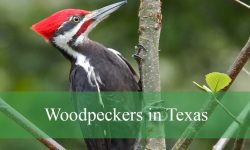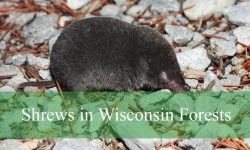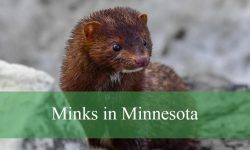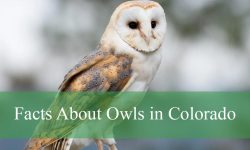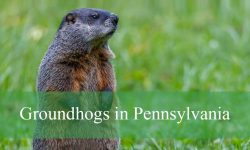Georgia’s diverse landscapes, from lush forests to sprawling farmlands, host an incredible variety of beetles. Each species has unique features, behaviors, and habitats, making them fascinating subjects for nature enthusiasts and photographers alike.
Exploring these beetles reveals their important roles in the ecosystem, from pollination to controlling pests. Understanding their characteristics helps identify them in the wild and appreciate their ecological value.
This guide highlights 12 notable beetle species in Georgia, providing clear identification tips and images to make spotting them easier and more enjoyable.
Common Beetles Found in Georgia
Asian Lady Beetle (Harmonia axyridis)
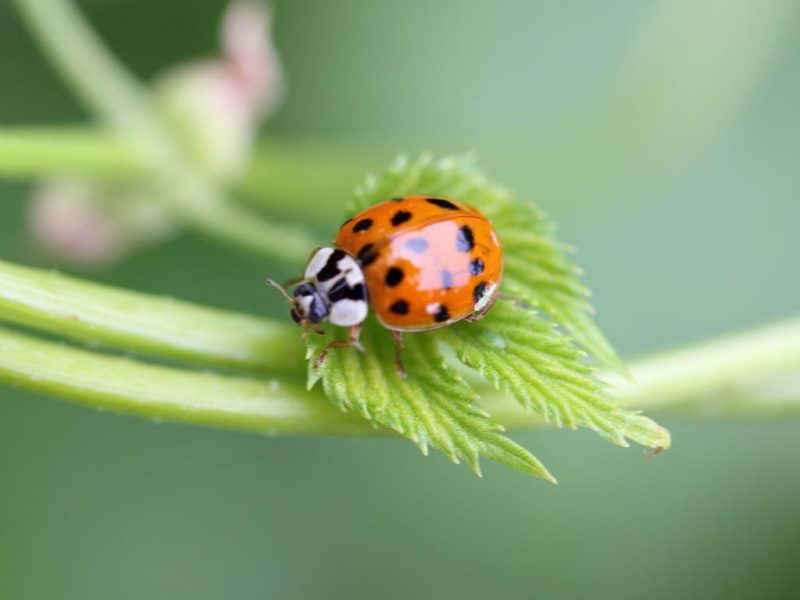
The Asian Lady Beetle is a medium-sized beetle, typically ranging from 5 to 8 mm in length, with a distinctive dome-shaped body. Its coloration varies from orange to red with black spots, but some individuals may have no spots at all. The pronotum often displays a characteristic M- or W-shaped black marking, which helps differentiate it from native lady beetles.
This species is highly adaptable and can be found in a variety of habitats, including gardens, agricultural fields, forests, and urban areas. It feeds primarily on aphids, scale insects, and other small pests, making it a beneficial predator for gardeners and farmers. Its voracious appetite contributes to its success in new environments.
Behaviorally, Asian Lady Beetles are known for their tendency to overwinter inside buildings. During the fall, large groups gather on the sides of homes and enter through small crevices to hibernate. They are also capable of flying long distances, aiding in their widespread distribution.
In Georgia, Harmonia axyridis is widespread across both urban and rural areas. It thrives in temperate climates and is commonly seen from spring through fall. Its population has grown rapidly since its introduction due to its generalist diet and strong reproductive capacity.
Black Carpet Beetle (Attagenus unicolor)
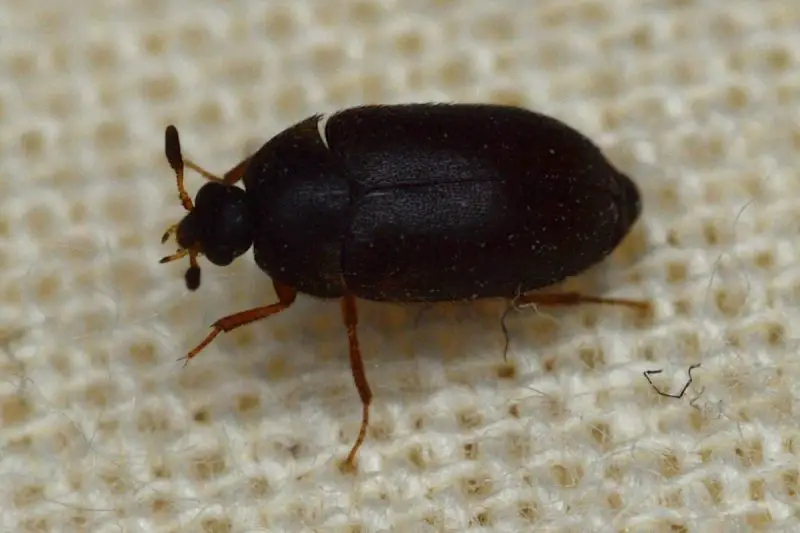
The Black Carpet Beetle is small, measuring approximately 3–5 mm in length, and is oval-shaped with a shiny, dark brown to black exoskeleton. Fine hairs cover its body, giving it a slightly velvety appearance. Larvae are elongated, covered in bristles, and often have a golden-brown color.
This beetle is primarily a scavenger, feeding on natural fibers such as wool, silk, feathers, and dried animal products. It is commonly found indoors in carpets, upholstered furniture, closets, and attics, where food sources are abundant. Infestations are often unnoticed until damage becomes apparent.
Black Carpet Beetles have a complete metamorphosis life cycle, lasting several months to over a year depending on environmental conditions. Adults are capable of flight and are often attracted to light, while larvae are highly destructive and can remain hidden for long periods.
In Georgia, Attagenus unicolor is distributed throughout homes and buildings, thriving in warm, humid conditions. It is particularly prevalent in urban and suburban areas, where human activity provides ample food sources for both larvae and adults.
Ground Beetle (Tachyta nana)
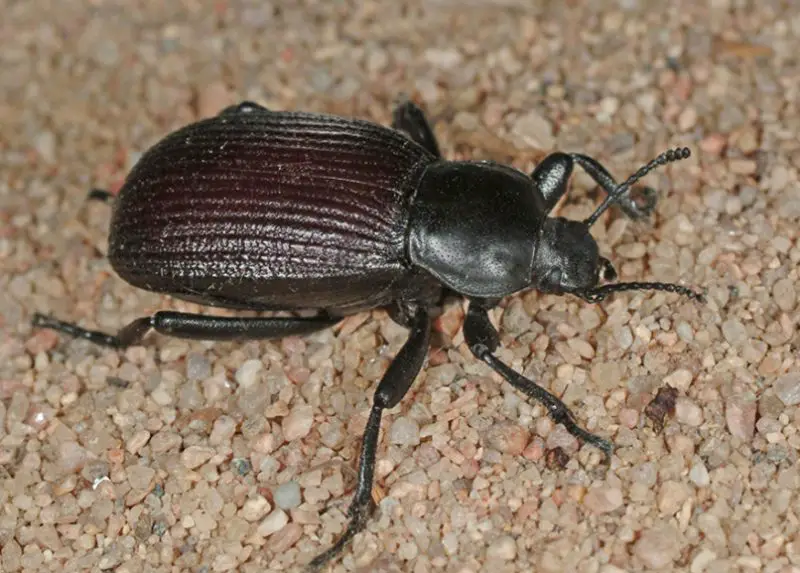
Tachyta nana is a small, fast-moving ground beetle, usually 2–4 mm long, with an elongated, dark brown to black body and smooth, shiny elytra. Its legs are long and adapted for running, making it an effective predator. The head is slightly narrower than the thorax, with prominent mandibles for capturing prey.
Ground beetles are predominantly nocturnal predators, feeding on other small insects, larvae, and soft-bodied invertebrates. They play an important role in controlling pest populations in gardens, fields, and forests. Tachyta nana is particularly agile and can quickly chase down its prey.
This species has a life cycle that includes egg, larva, pupa, and adult stages, with development largely influenced by soil temperature and moisture. Adults may burrow into leaf litter or soil during the day to avoid predators and emerge at night to hunt.
In Georgia, Tachyta nana is commonly found in moist soils, under stones, leaf litter, and along the edges of forests and agricultural fields. Its presence is widespread, contributing to the natural pest control ecosystem throughout the state.
Eyed Click Beetle (Alaus oculatus)
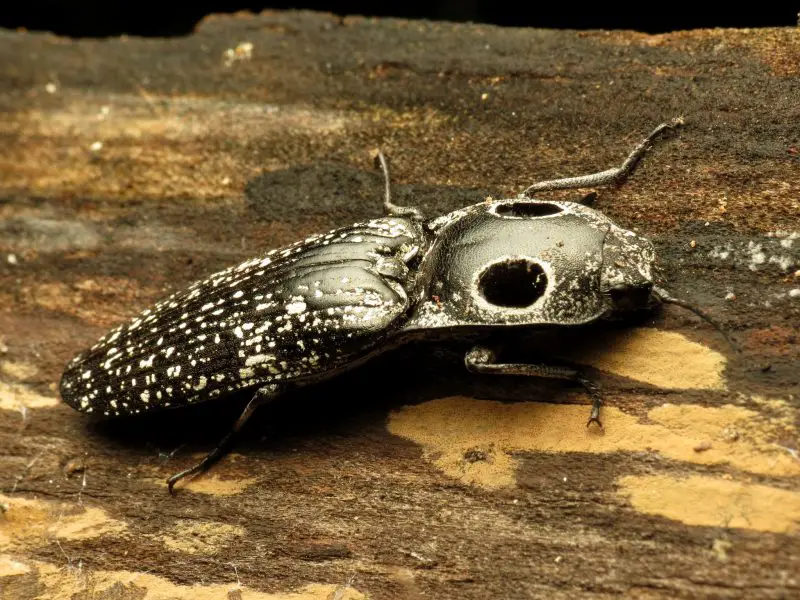
The Eyed Click Beetle is large for a click beetle, measuring 25–45 mm in length, with a dark brown to black elongated body. Its most striking feature is a pair of large, eye-like spots on the pronotum, which serve as a defense mechanism to deter predators. The body is heavily ridged and covered with small hairs.
These beetles are nocturnal and primarily feed on nectar or plant matter, while larvae are predatory on wood-boring insects. The larvae, often called wireworms, develop inside decaying wood, feeding on insect larvae and contributing to nutrient cycling in forest ecosystems.
Eyed Click Beetles are named for their ability to “click” by snapping a spine on the prosternum into a notch on the mesosternum. This clicking action propels the beetle into the air to escape predators or right itself when flipped onto its back. Adults are strong fliers and are often attracted to lights at night.
In Georgia, Alaus oculatus is typically found in wooded areas, forests, and near decaying logs. It prefers habitats with abundant dead wood for larval development. Its distribution spans most of the state, with higher abundance in mature forests and rural areas.
Striped Blister Beetle (Epicauta vittata)
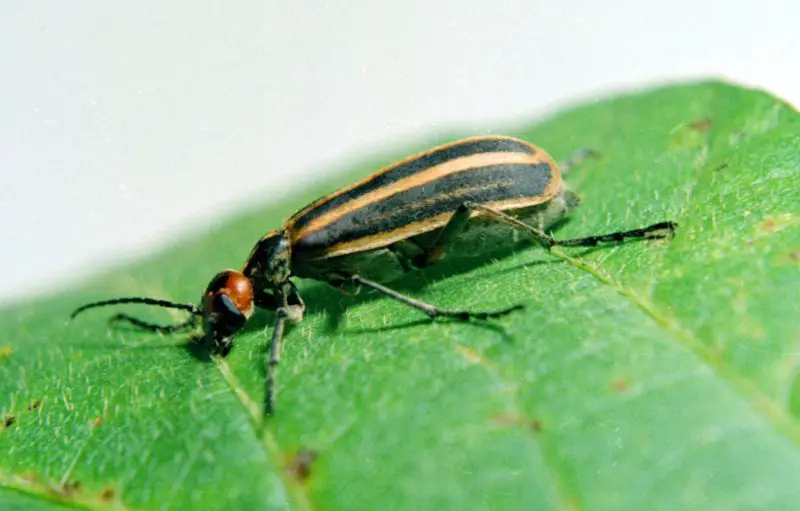
The Striped Blister Beetle is slender and elongated, typically 10–20 mm long, with a yellow to orange body marked by distinct black longitudinal stripes. Its soft elytra make it vulnerable to predators, but it produces cantharidin, a toxic compound that can cause blistering upon contact.
This beetle feeds primarily on foliage and flowers of various plants, including crops like alfalfa and tomatoes. Its feeding can sometimes result in significant agricultural damage, especially during population outbreaks. Adults often congregate in groups, making infestations more noticeable.
Blister beetles undergo complete metamorphosis, and their larvae are parasitic, commonly targeting grasshopper eggs in the soil. Adults are strong fliers and migrate to locate suitable feeding and mating sites. The presence of cantharidin also provides chemical defense against predators.
In Georgia, Epicauta vittata is widespread in agricultural areas, gardens, and open fields. It is most active during late spring and summer when temperatures are warm and host plants are abundant. Proper monitoring is essential to manage its impact on crops.
Black Turpentine Beetle (Dendroctonus terebrans)
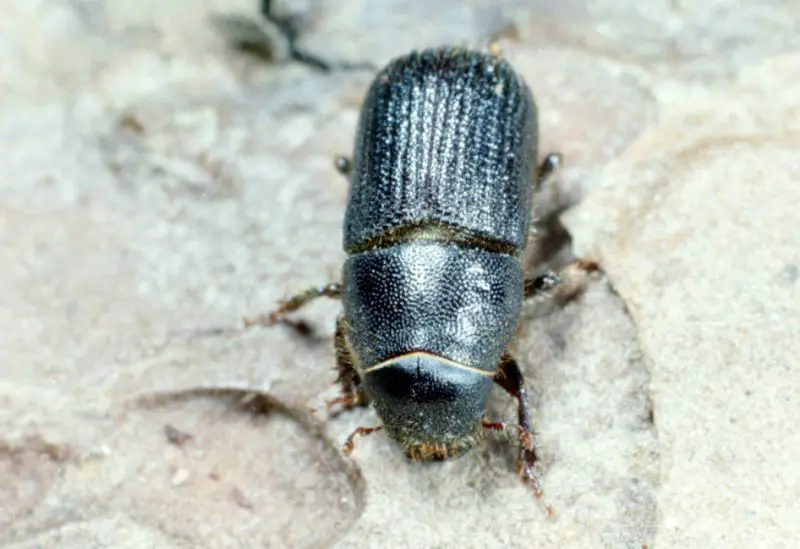
The Black Turpentine Beetle is small, measuring 3–5 mm in length, with a cylindrical, dark brown to black body. Its head is rounded, and the elytra are heavily punctuated with rows of tiny pits. Males and females are similar in appearance, though females initiate tree attacks.
This species primarily attacks pine trees, burrowing into the bark to lay eggs. Larvae develop in the phloem, feeding on inner bark and disrupting nutrient transport, which can stress or kill weakened trees. Black Turpentine Beetles are also associated with tree wounds, including logging or storm damage.
Adults can fly short distances to locate suitable host trees, and colonies are often concentrated on the lower trunks of pines. They produce aggregation pheromones to attract other beetles, facilitating mass attacks that overwhelm tree defenses.
In Georgia, Dendroctonus terebrans is widely distributed throughout pine forests, including both managed plantations and natural stands. It thrives in areas with stressed or damaged pines and is considered an important species in forest pest management.
Red Flour Beetle (Tribolium castaneum)

The Red Flour Beetle is a small, slender beetle, measuring approximately 3–4 mm in length. Its reddish-brown coloration and elongated, flattened body distinguish it from other stored-product pests. The antennae are clubbed at the ends, which is characteristic of this species.
This beetle is a major pest of stored grains, flour, cereals, and other dry food products. Adults and larvae feed on processed grains and flour, contaminating food with frass and exoskeletons. Its presence is often detected in homes, mills, and warehouses.
Tribolium castaneum undergoes complete metamorphosis, with egg, larval, pupal, and adult stages. The life cycle can be completed in a few weeks under warm conditions, allowing populations to increase rapidly. Adults are capable of limited flight, but they mostly crawl to spread to nearby food sources.
In Georgia, Red Flour Beetles are commonly found in kitchens, pantries, storage facilities, and grain-processing areas. They thrive in warm and humid conditions, making them particularly troublesome during the summer months. Proper storage and sanitation are key to preventing infestations.
June Beetle (Phyllophaga spp.)
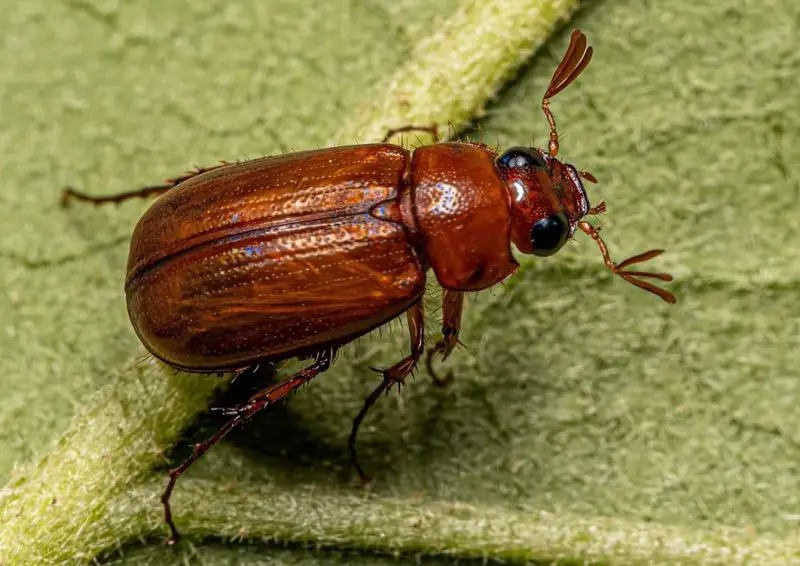
June Beetles are medium to large-sized beetles, generally 12–25 mm in length, with robust, oval-shaped bodies. Their coloration ranges from brown to reddish-brown, with shiny elytra. Larvae are white, C-shaped grubs that live in the soil and feed on plant roots.
Adults primarily feed on the foliage of deciduous trees, shrubs, and crops, sometimes causing noticeable defoliation. The grubs, known as white grubs, feed on the roots of grasses and garden plants, which can damage lawns and pastures.
June Beetles have an annual or multi-year life cycle depending on the species. Adults emerge in late spring to early summer, often flying at dusk, attracted to lights, and are active for only a few weeks. Larvae remain in the soil for multiple months to years, feeding and developing before pupation.
In Georgia, Phyllophaga species are widespread throughout lawns, pastures, woodlands, and agricultural fields. Their populations are highest in areas with sandy or loamy soils, and they are particularly noticeable during the warm months of May through July.
Stag Beetle (Lucanus elaphus)
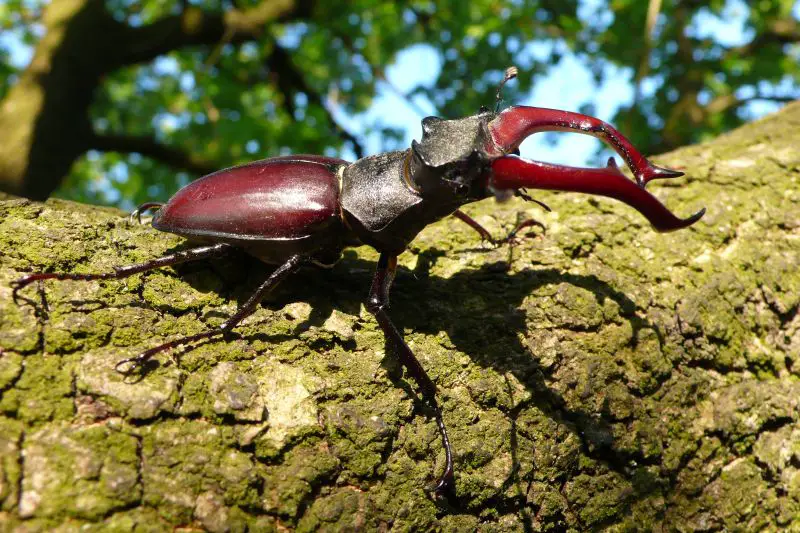
The Stag Beetle is a large, robust beetle, ranging from 35–70 mm in length. Males are particularly notable for their oversized mandibles, which resemble deer antlers, while females have smaller, functional mandibles. The body is dark brown to black, with a glossy appearance.
Adult Stag Beetles feed on tree sap, rotting fruit, and other sugary substances, while the larvae feed on decaying wood. Larvae are cream-colored, C-shaped, and can take several years to mature depending on available resources.
Behaviorally, male Stag Beetles use their large mandibles in combat to compete for mates. Adults are most active during warm evenings and are generally weak fliers. They are harmless to humans despite their intimidating appearance.
In Georgia, Lucanus elaphus inhabits deciduous forests, woodlands, and areas with abundant rotting logs and stumps. They are widely distributed throughout the state but are most often observed in mature forests with plentiful dead wood for larval development.
Emerald Ash Borer (Agrilus planipennis)
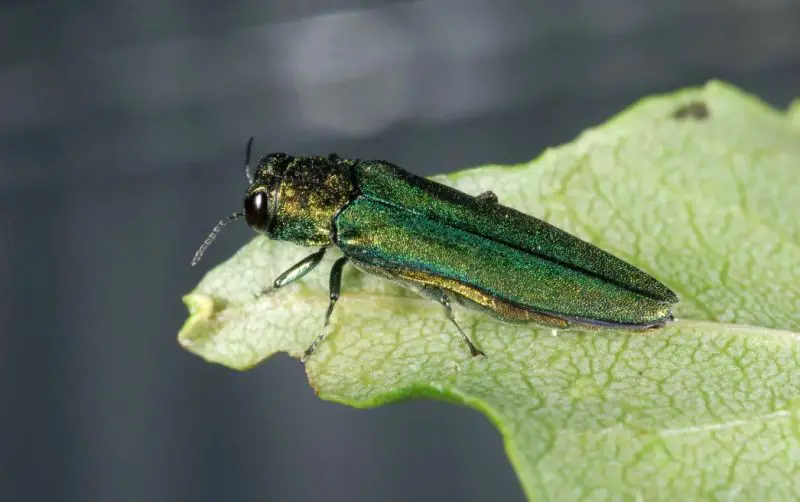
The Emerald Ash Borer is a small metallic green beetle, measuring 8–14 mm long and about 3 mm wide. Its elongated, slender body and iridescent coloration make it highly distinctive. Larvae are creamy-white, flat-headed borers that tunnel under the bark of ash trees.
This invasive species primarily attacks ash trees (Fraxinus spp.), feeding on the inner bark and disrupting the tree’s ability to transport water and nutrients. Both larvae and adults contribute to the decline and eventual death of infested trees.
Emerald Ash Borers have a one-year life cycle in southern climates, though it can extend to two years in cooler regions. Adults emerge in late spring to early summer, often leaving distinctive D-shaped exit holes in the bark. Larvae feed during the growing season, creating serpentine galleries under the bark.
In Georgia, Agrilus planipennis has been detected in several counties, particularly in urban areas and forests where ash trees are prevalent. It spreads both naturally through adult flight and through human-assisted movement of infested firewood and nursery stock.
Pine Sawyer Beetle (Monochamus spp.)

Pine Sawyer Beetles are large longhorn beetles, typically 20–35 mm in length, with elongated bodies and long antennae often exceeding the body length. Their coloration is usually dark brown to black with mottled patterns that provide camouflage on pine bark.
These beetles primarily attack weakened or recently cut pine trees. Larvae bore into the wood, feeding on the sapwood and cambium, while adults feed minimally on needles and bark. Larval activity can create galleries that weaken timber, making them a concern in forestry.
Monochamus species have a one- to two-year life cycle, depending on temperature and host availability. Adult beetles are strong fliers and are often attracted to stressed or freshly cut pines. They also serve as vectors for the pinewood nematode, a serious pest of pine forests.
In Georgia, Pine Sawyer Beetles are widespread in pine forests, plantations, and logging areas. They are most common in the Piedmont and Coastal Plain regions, particularly where pine stress or logging activity provides ideal breeding sites.
Banded Elm Bark Beetle (Scolytus schevyrewi)
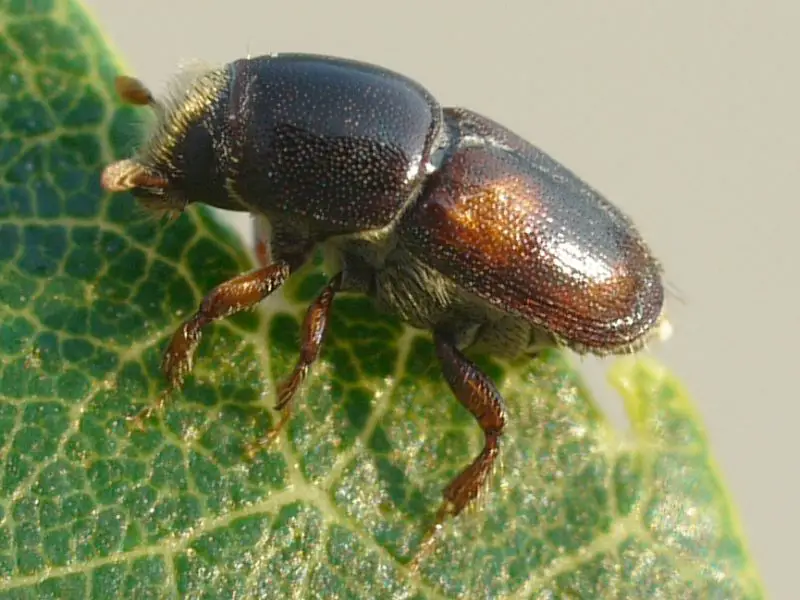
The Banded Elm Bark Beetle is a small cylindrical beetle, typically 2–4 mm long, with dark brown to black bodies and pale bands across the elytra. Its compact size and distinctive markings make it identifiable among bark beetles.
This species primarily infests elm trees, feeding and breeding under the bark. Larvae tunnel through the phloem, disrupting nutrient transport, while adults continue to colonize weakened or stressed trees. S. schevyrewi can contribute to the spread of Dutch elm disease by carrying fungal spores.
The life cycle includes egg, larval, pupal, and adult stages, with multiple generations possible in warm climates. Adults are capable of flight and actively search for suitable host trees to establish new colonies. Larvae develop under bark galleries, emerging as adults to continue the cycle.
In Georgia, Banded Elm Bark Beetles are found throughout the state, particularly in urban areas, woodlots, and riverine forests with American and other native elm species. Their activity peaks during late spring and summer, coinciding with warmer temperatures.
FAQs About Common Beetles in Georgia
What types of beetles are commonly found in Georgia?
Georgia hosts a diverse range of beetles, including both beneficial and pest species. Common types include the Asian Lady Beetle, Black Carpet Beetle, Ground Beetle, Eyed Click Beetle, Striped Blister Beetle, Black Turpentine Beetle, Red Flour Beetle, June Beetle, Stag Beetle, Emerald Ash Borer, Pine Sawyer Beetle, and Banded Elm Bark Beetle. These beetles occupy forests, fields, gardens, urban areas, and homes, each with specific habitats and behaviors.
Are any of these beetles harmful to humans?
Most beetles in Georgia are harmless to humans, though some, like the Striped Blister Beetle, produce chemicals that can cause skin irritation. Black Carpet Beetle larvae can damage textiles, and Red Flour Beetle contaminates stored food. Other species, such as Asian Lady Beetles and Stag Beetles, are considered beneficial or harmless despite their appearance.
Which beetles are beneficial for gardens and agriculture?
Beneficial beetles include Asian Lady Beetles, which feed on aphids and other garden pests, and Ground Beetles, which prey on soil-dwelling insects and larvae. These species help naturally control pest populations, reducing the need for chemical pesticides.
Which beetles are considered pests in Georgia?
Pest beetles include the Red Flour Beetle (stored product pest), Black Carpet Beetle (textile pest), Emerald Ash Borer (kills ash trees), Pine Sawyer Beetle (affects stressed pines), and Banded Elm Bark Beetle (spreads Dutch elm disease). They can damage crops, timber, stored food, and ornamental trees.
When is the best time to see beetles in Georgia?
Most beetles are most active during the warmer months, from spring through summer. Species like June Beetles are primarily seen at dusk, while Asian Lady Beetles often appear in fall when seeking overwintering sites. Beetle activity may vary depending on habitat, temperature, and availability of food sources.
How can I prevent beetle infestations at home?
Proper sanitation, sealing cracks, and storing food in airtight containers can reduce indoor beetle problems. For garden beetles, monitoring plants, removing damaged wood, and encouraging natural predators can minimize pest populations. Chemical treatments are generally a last resort for invasive or damaging species.
Are any of these beetles invasive in Georgia?
Yes, the Emerald Ash Borer and Banded Elm Bark Beetle are invasive species. They threaten native trees and forests, spread rapidly, and are difficult to control without proper management practices.

